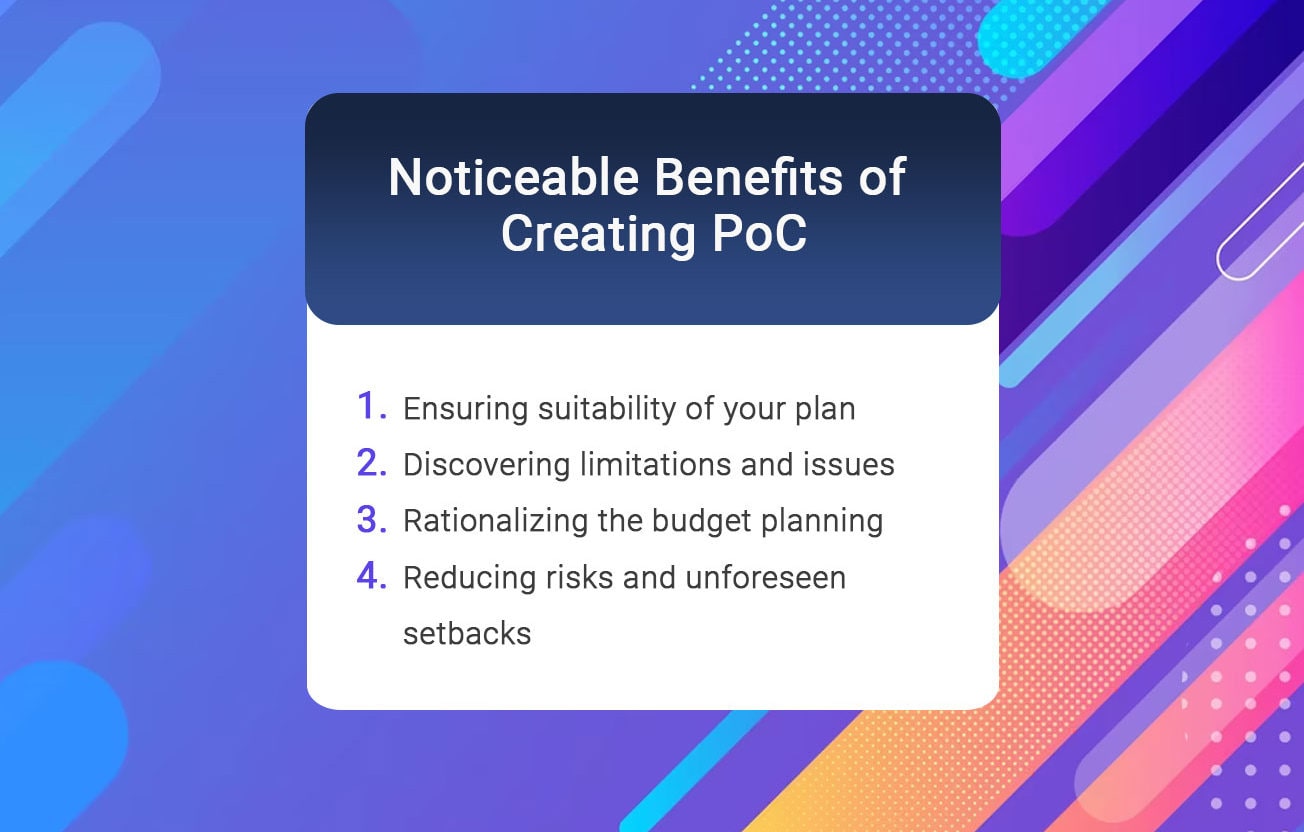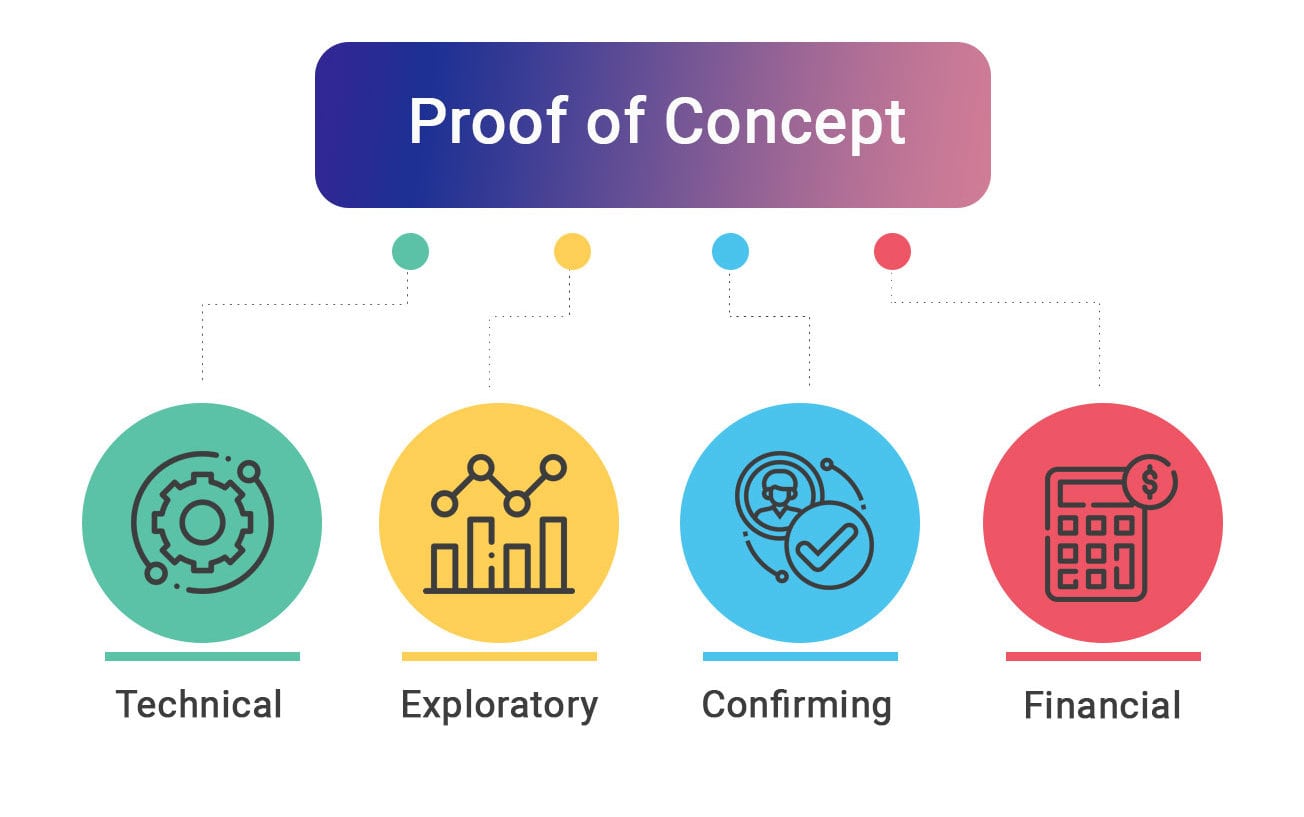Summary
The article explains that a PoC is a lightweight early‑stage project or document designed to validate whether a software idea is technically and conceptually feasible before committing significant time, money, or resources. It highlights how PoC helps uncover hidden risks, verify chosen technologies, streamline budget and workflow planning, and reduce the chances of costly rework later.
When developing a product that will be used by your employees or clients, you cannot avoid thinking of how to manage the project you have in mind. It is vital to understand the goals of your product and the outcome of your project. That is why one should define what will be done during all the stages of the Software Development Life Cycle (SDLC).
The beginning stage may be one of the most difficult steps for a company in general and teams that are in charge of the project in particular, because you need to think carefully about what you want to achieve at the end. It is especially relevant if it is a startup we are talking about. Thus, processes such as creating Proof of Concept (PoC), MVP, or prototype may arise. In today’s article, we will explore in detail what the proof of concept is, which types you may choose from, and how you can create one in order to help your team to reach the goal.
Facing the Obvious Matters
Let’s deal with the obvious first. PoC, prototype, and MVP are not the same, and they are connected to various development steps. Proof of concept helps your team to define whether the idea is achievable or not. Creating a prototype shows what the product will look like regarding architecture and design. And, by developing MVP, it is possible to have an idea of how the basic functions will work.
Read Also MVP vs POC vs Prototype — Main Differences and Benefits
Now that we have a clearer understanding of the diversities of these terms, it’s time to consider the proof of concept definition. One can opt for diverse approaches when choosing to create this document. Some may know proof of concept in software development as Proof of Principle or Sales PoC.
Despite a little different names, it has one key principle. This is a demonstration of a product that allows you to get valuable feedback from all stakeholders at a very early stage of the software development life cycle and mitigate unnecessary risks. It can be created by a Team Leader or one of the other employees during the project discovery phase. Project managers can use it as a framework during the creation of a product. With the help of PoC, it is possible to pursue and validate ideas before approving them for further production and testing. Creating such a document is a good way for both software development projects for startups and enterprises.

Some of the noticeable benefits of creating PoC include the following:
- You are able to ensure that the chosen plan of workflow is suitable in your case and matches the expectations of your target audience;
- Limitations and possible issues can be determined, and you can understand if the idea would be technically accomplished;
- You can rationalize the budget planning and find the effective strategy;
- PoC allows you to reduce risks and unforeseen setbacks and optimize company resources to let you have a smooth product delivery journey.
The document can be valuable in many cases. For example, you want to figure out if it is even technologically possible to develop an application you have in mind, but you don’t want to spend your resources and time in vain. PoC can also help a team that struggles to add new features into an existing system. By creating one, you are able to understand which of the proposed features make more sense, can be developed by employees, will be valuable for users, and can be added to a product successfully. In such a case, it is vital to find out if the technology that is planned for implementation is even compatible with your product.
In other words, you can say that PoC is sort of a testing stage before the actual testing stage of the development cycle.
Read Also Discovery Phase in Software Development. Why It Is Important for the Success of Your Project
Types of PoC and Checklist for Creating One

Before compiling proof of concept, it is better to know its types first. So, let’s see which one may fit your project criteria.
- Technical
Let’s say you want to determine if the technology stack of your development team can fulfill the requirements of the project. In this case, the technical type of PoC may help you. It is usually carried out by engineers, and its key goal is to resolve particular technical issues. It is ideal for reducing risks related to the technical side of the process.
- Exploratory
This type is used in case you need to recognise whether your product would even work at all or not. It fits perfectly when you are developing a new solution, because this way you can get a better perception of which elements should be added or changed.
- Confirming
Ensuring that your application meets the needs of customers is essential, so using the confirming type may be a good choice in this case. You basically take into account the needs of your target users and gain an understanding of how the solution will be adopted. It also helps to find out which elements require improvement.
- Financial
This one is ideal if your team has to define the investment feasibility. In other words, you compile the details related to your finances in order to forecast the predicted profitability of your project. With the help of the financial type of proof of concept, it is possible to figure out if the idea is worthwhile.
Read Also How Much Does It Cost to Develop an App and Which Methods Can Reduce Expenses?
Of course, all these types can intertwine, and a team leader may think of using several of them at once if needed. The important part is to define first what you want to explore. After that, you will be able to proceed with following the steps of creating and deploying a proof of concept.
To make it easier for you, we compiled a set of questions that you will need to answer to be able to follow each step.
Step 1. Identify the idea
- What exactly do you want to explore and test?
- Is it a particular feature/process or a whole application?
- What is the problem that you want to review?
Step 2. Understand the data requirements
- Which data is needed to create the right business case?
- Did you capture both technical and operational data?
- Did you measure technology effectiveness and user experience?
Step 3. Estimate time and effort
- Did you estimate the time that will be put into the project?
- Did you estimate the effort?
Step 4. Define the scope of PoC and success metrics
- What will be done?
- Did you evaluate the project thoroughly?
- Did you determine clear success metrics?
Step 5. Define responsible people and resources
- Have you decided on assigned team members?
- Are all skill sets identified and secured?
- Do you have the key resources?
It is even better if you add your own questions or implement additional steps in order to be sure that all sides are covered. It all depends on each individual project, so you can change the PoC based on your team’s goals.
Proof of Concept (PoC) vs. Proof of Value (PoV)
It’s worth mentioning that, besides PoC and other concepts that one can use during the very first application development stage, you may also run into the comparison of PoC and Proof of Value. Both methods are applied when proving product value. However, while PoC is a more layered process, PoV doesn’t require the recreation of client production environments. It may be seen as a simpler version of PoC that works best in controlled environments. PoV refers more to customer use cases when identifying the value of your software.
Thus, for example, you can choose this method instead of PoC if you already have a working product and well-established team with the needed skills but want to implement some additional features to it.
Read Also Prototyping in Software Development in Simple Words
Conclusions
Proof of concept is a useful document that can greatly help a team during the software development process. This is not an obligatory approach, however, many businesses use it to their benefit. It is not prohibited to use it along with MVP and prototyping – many companies do so. You can use these principles individually, or not use them at all. It all depends on your goals, resources, and product requirements. But why not make your business closer to success?
If you want to get help with creating an MVP or need an expert opinion on your project, you can contact us and get a professional consultation. We are always ready to help and offer you time- and cost-saving solutions.